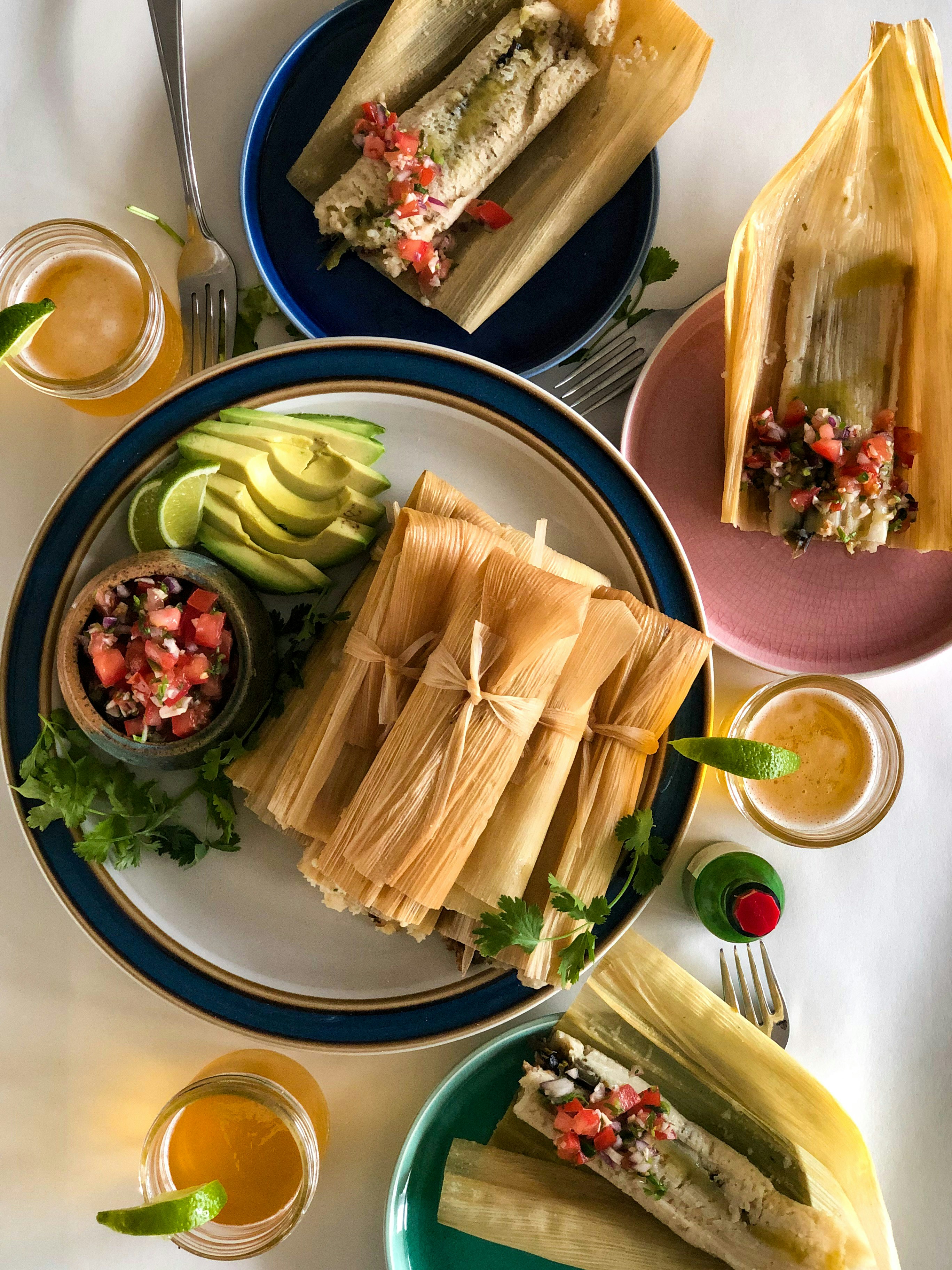Exploring the Different Types of Masa Harina
Not all masa harina is the same—and choosing the right one can make all the difference in your tamales, tortillas, or pupusas.
Before we get into the unique types like Organic Blue Corn Masa or Tamale Masa Flour, check out our What Is Masa Harina? guide for the basics on how it’s made and why nixtamalization matters.
Learn what makes each unique, discover their key benefits, and find the best uses for each type. Whether you’re searching for Organic Blue Corn Masa, Tamale Masa Flour, or the perfect masa for Pupusas, this guide provides detailed insights.
Blue Masa Harina
What Makes It Unique
Blue Masa Harina is produced from blue corn (typically Hopi or Pueblo varieties) that has been nixtamalized and finely ground. Its striking indigo color comes from natural anthocyanins—the same antioxidants found in blueberries—that enhance both its visual appeal and nutritional benefits. This variety offers a slightly nuttier, earthier taste compared to traditional yellow or white masa, making it an excellent choice for colorful tortillas, cornbreads, and creative twists on classic dishes.
Key Benefits
-
Natural Blue Hue: Derived from anthocyanins.
-
Lower Glycemic Index: Supports steadier energy levels.
-
Rich, Nutty Flavor Profile: Adds depth to various recipes.
-
Diet Friendly: Gluten-free and vegan-friendly.
Best Uses
-
Blue corn tortillas and vibrant taco wraps.
-
Hearty pancakes, waffles, or muffins.
-
Blue corn cornbread and scones.
-
Homemade tortilla chips with fresh dips.
––––––––––––––––––––––––––––––––––––––
Organic Masa Harina
What Makes It Unique
Organic Masa Harina is crafted from certified organic corn—whether white, yellow, or blue—that undergoes traditional nixtamalization with lime (calcium hydroxide) prior to milling. Sourced from non-GMO, pesticide-free farms, this masa offers an authentic flavor while aligning with sustainable and transparent food practices.
Key Benefits
-
Certified Organic: Made from non-GMO corn.
-
Traditional Process: Nixtamalization for optimal texture and taste.
-
Clean Label: Free from synthetic pesticides, herbicides, and additives.
-
Versatile: Ideal for a wide range of Latin American dishes.
Best Uses
-
Soft corn tortillas and wraps.
-
Classic tamales and empanadas.
-
Sopes, gorditas, and huaraches.
-
Pupusas with organic fillings.
––––––––––––––––––––––––––––––––––––––
Tamale Masa Harina
What Makes It Unique
Unlike standard all-purpose masa harina, Tamale Masa Harina—often labeled as Tamale Masa Flour—is specially formulated for steaming. These commercial blends typically include added fat (lard or vegetable shortening) and sometimes a leavening agent, with a slightly coarser grind. These tweaks help create a dough that spreads easily on husks, retains moisture during steaming, and produces tamales with a light, tender crumb.
Key Benefits
-
Enhanced Tenderness: Pre-mixed fat ensures extra moisture.
-
Coarser Grind: Improves water retention during steaming.
-
Consistent Texture: Simplifies dough handling.
-
Leavening Additives: Contribute to a lighter texture.
Best Uses
-
Traditional pork, chicken, cheese, or vegetarian tamales.
-
Specialty tamale variations such as sweet corn, mole, or chocolate tamales.
-
Tamale casseroles and tamale pies.
-
Steamed masa dumplings or cakes.
––––––––––––––––––––––––––––––––––––––
Pupusa Masa Harina
What Makes It Unique
For making pupusas, many Salvadoran cooks rely on standard instant masa harina—no separate “pupusa flour” is necessary. The secret lies in proper masa dough hydration, thorough kneading, and effectively sealing the fillings rather than using a unique flour blend. With the right moisture adjustment, your all-purpose masa transforms into an ideal pupusa dough.
Key Benefits
-
Versatile: Uses the same masa as tortillas.
-
Quick Preparation: Enables rapid hydration and kneading for a soft dough.
-
Neutral Flavor: Allows fillings to shine.
-
Cost-Effective: Economical and widely available.
Best Uses
-
Cheese and bean pupusas with traditional curtido and salsa roja.
-
Loroco and cheese pupusas for authentic Salvadoran flavors.
-
Sweet pupusas stuffed with pumpkin or sweet cheese.
-
Also perfect for griddled corn cakes, sopes, or arepas.
––––––––––––––––––––––––––––––––––––––
Recipe Spotlight: Blue Corn & Cheese Pupusas
Dough:
-
-
2 cups Blue Masa Harina
-
1¼ cups warm water
-
A pinch of saltMix until a smooth, pliable dough forms.
Filling:
-
-
1 cup shredded queso fresco
-
½ cup refried beansCombine ingredients for a perfect savory blend.
Assembly & Cooking:
-
-
-
Divide the dough into 8 balls. Flatten each ball and place a spoonful of the filling in the center. Seal the dough around the filling and gently reshape.
-
Grill on a preheated griddle for 3–4 minutes per side until golden and slightly puffed.
-
-
Serve:Accompany your pupusas with traditional curtido and salsa roja for an authentic Salvadoran experience.
––––––––––––––––––––––––––––––––––––––
Wrapping It Up
This guide offers a high-level overview of the diverse types of masa harina available. For a broader understanding of its history, the traditional nixtamalization process, and its versatile culinary applications, be sure to check out our detailed “What Is Masa Harina?” pillar post. Whether you’re aiming for vibrant blue masa tortillas or authentic tamale dough, the right choice of masa can elevate your favorite recipes to new heights.
Whether you’re looking to experiment with the vibrant color and flavor of blue masa harina or prefer the clean, ethical choice of organic masa harina, these variants can add depth to your culinary endeavors. Consider trying different types in your recipes to see which best complements your traditional dishes or inspires new creations.
